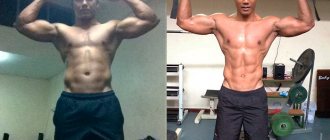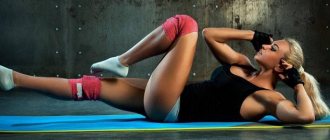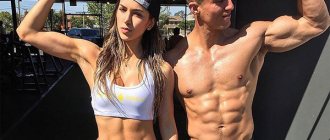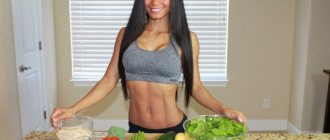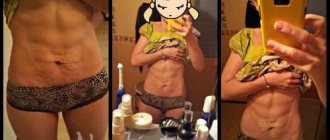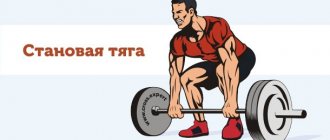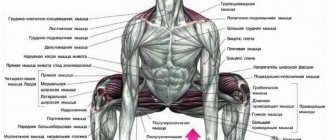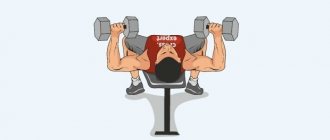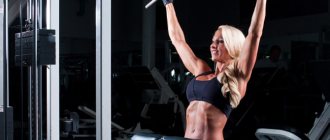After the period of gaining muscle mass, which is important for pros and gym enthusiasts, comes an equally significant period – work on relief. Drying means the maximum reduction in subcutaneous fat content for better muscle definition; for athletes, an important criterion for high-quality drying is separation (visible muscle division). But still, how to dry out without losing muscle mass, maintaining as much as possible the volumes gained so hard? This is a complex and strong-willed job that requires a set of actions.
What is body drying
Body cutting is a sports term that means reducing the level of subcutaneous fat while maintaining maximum muscle mass. As a result of this complex of measures, the body acquires a slender, toned appearance with good relief of all muscles. Despite the fact that it was introduced into practice by bodybuilders, the method is widely used by different categories of people.
Sports nutrition for cutting after gaining weight
Recommendations for sports nutrition during cutting naturally differ from weight gain. During this period, all additives containing carbohydrates and promoting the accumulation of fluid in the body are excluded (gainers, pre-workouts, liquid L-carnitine, creatine, bars, protein with a high content of milk sugar). Below is a list of permitted additives.
Whey isolate
It is the purest protein product because it contains a minimum of lactose. This product is not necessary for cutting, but is an excellent alternative to a full meal before or after training.
Amino acids
Full cycle complexes and BCAA are the main helpers in preventing catabolism. Despite the fact that the diet is rich in protein, additional intake of quickly absorbed amino acids will help prevent muscle breakdown after sleep and exercise. With a low-carb diet, amino acids will never be superfluous.
L-carnitine
This vitamin-like substance is capable of transporting fats into energy. The supplement will not have a big impact on fat loss, but it will help add energy and speed up metabolism. L-carniine forms must be encapsulated, without impurities and sugar. Take 30-40 minutes before training.
Fat burners
Another helper in obtaining additional energy and reducing appetite is a thermogenic fat burner. Although these supplements have contraindications and side effects, sometimes it is almost impossible to cope without them on a low-calorie diet. Typically, such products contain a patented ECA complex (ephedrine, caffeine, aspirin), but should be taken with caution , starting with one capsule in the morning, then adding a second dose at lunch after a meal, but before training.
Who needs body drying?
Any person who wants not just to lose weight, but to improve the silhouette of their body can “dry out”. The basic rules of this method include a gradual cessation of carbohydrate consumption and increased physical activity. It should be borne in mind that it is more suitable for people with sufficient muscle mass. Otherwise, it is difficult to achieve a harmonious appearance.
What is the difference between drying the body and losing weight?
During drying, as during normal weight loss, the emphasis is on dietary restrictions and physical activity. The difference is that diets slow down your metabolism and don't take into account the importance of preserving muscle fibers. For drying, on the contrary, this is a primary task. For the average athlete or person who wants to give their body a chiseled silhouette, you can simply limit your carbohydrate intake and maintain a healthy diet and exercise routine.
Previously, we wrote about how to lose weight and build muscle at the same time, how much is possible and what needs to be done.
Drying individual body parts
If you are interested in how to dry one specific part of the body (legs, arms, abs, etc.), then the answer is no. The process of losing weight during drying necessarily affects the entire body and simultaneously affects all fatty tissues. Of course, every person has their own problem areas. Bodybuilders are no exception. And in order to achieve the most harmonious proportions, they have to select a training plan, the loads in which will be distributed taking into account the individual characteristics of the body.
Alexey Bezymyanny - general practitioner, teledoctor, host of the program “About the Most Important Thing”:
First, let's figure it out together: what is the most popular drying today? At first glance, this is a regular diet that involves high protein consumption, consumption of complex carbohydrates in small doses and a complete exclusion of fast carbohydrates from the diet. In its more stringent form, this diet generally reduces carbohydrate consumption to a critical minimum. There is also an alternating drying method: carbohydrate days alternate with protein days. But the method of alternation can be attributed to more moderate diets of another segment.
Photo: archive of the Moscow Department of Health
After this, it would be correct to dwell on the contraindications to this method of losing weight. Of course, a protein diet, especially if you supplement it with intense exercise in the gym, will give effect quite quickly. But you shouldn’t chase results; it’s important to understand that a healthy body is a 90% healthy organism. If your body is exhausted by stress and an unhealthy lifestyle, all this will sooner or later manifest itself.
How to start drying
Before you start drying, you should consult your doctor. The technique is permitted only if there is sufficient muscle structure. Since the process of such weight loss affects only the fat layer, it is important that in the end you are left with at least something. This is why professionals gain weight before cutting. The moment of the beginning of the “dry period” is determined depending on the condition of the body. For some, two weeks are enough to achieve the desired relief, while for others it may take six months.
Contraindications for drying
Drying is not the most gentle way to lose weight for the body. That is why there are a number of absolute contraindications for it:
- pregnancy and lactation;
- diabetes mellitus of any type;
- diseases of the gastrointestinal tract;
- diseases of the heart and blood vessels;
- diseases of the kidneys, liver and pancreas.
Considering the absence of the above phenomena, as well as other factors that cast doubt on the benefits for your body, the doctor will give appropriate recommendations: he will allow or warn you about the undesirability of drying.
Contraindications to rapid drying of the body
Kidney diseases of various manifestations.
Liver diseases and some gallstone diseases.
Problems with the gastrointestinal tract, especially if they are chronic.
Any oncological diseases and neoplasms.
This diet is also contraindicated for older people, as it increases the risk of thrombosis, which is life-threatening.
Also, I would not recommend using the diet during pregnancy and breastfeeding.
In any case, if all these deviations do not apply to you, you can try and gradually eliminate carbohydrates from your diet. Advice: listen to your body, if you feel weak and unwell, consult a doctor. Ideally, of course, although I understand that few people do this now, to draw up a nutrition plan, contact a professional nutritionist who can take into account all the intricacies of your body.
Basic general rules
During drying, the body has to adapt to a completely new operating mode. He is accustomed to taking energy exclusively from the carbohydrates he consumes, which is now becoming impossible due to a serious limitation in their quantity. Accumulated fat and muscle mass remain at your disposal. If we take into account that the body is programmed to preserve fat reserves, then it becomes natural that it will want to use muscles. But the main task of drying is to preserve them. This is where adequate protein intake and strength training come in handy. These two factors together deprive the body of choice and force it to use fat tissue for energy production.
Thus, the basic rules of drying are as follows:
- gradually reduce (minimize for professionals) the amount of carbohydrates in the diet;
- increasing protein intake;
- We follow an intensive training regimen based on a combination of cardio and strength training;
- We use auxiliary sports supplements and drugs - for professionals.
entrance and exit
Important aspects of proper drying are gradual entry and exit from it. The technique of such weight loss represents serious stress for the body, which can lead to frequent mood swings and even a mild degree of neurosis. It is recommended to start the whole process by uniformly reducing the amount of carbohydrates in the diet to the standards that will be described below. The exit is also carried out gradually with the return of their previous quantity. This process usually takes about two weeks.
When to do exercises that include elements of aerobics?
A teenager needs to do exercises that include elements of aerobics at the beginning of the day. In the morning. Even before you eat.
At this time of day, a teenager’s body has very little glycogen content. Therefore, the body will need to draw energy from somewhere outside. He will do this with the help of fat. Resort to it in order to extract energy. And, as a result, get rid of the fat layer.
How to burn fat after aerobic exercise?
When the teenager finishes training with elements of aerobics, he should complicate the task. Organize a workout that includes weights. And various elements with weights. The exercises that a teenager will have to do should not be exotic. They should be standard. And use basic muscle groups.
Activities that involve these fat-burning exercises should not put too much strain on a teenager's body. He must use lighter weights than he usually uses.
The goal of this type of training is to maintain muscle volume at the level that the teenager had before the drying process. There is no talk of any weight gain. This is not possible during drying.
What diet should you follow while cutting?
When a teenager gets dry, just training effectively and resorting to new exercises is not enough. A teenager must definitely change the way he eats. Start eating according to a specific diet.
We will tell you which nutrition program you can choose.
Diet #1
The first diet is the easiest to implement. As part of it, the teenager can leave the same products that he consumes. But make the portions much smaller. By about 30%.
Diet #2
The second diet is that the teenager needs to start consuming fewer calories. Their total volume should be five hundred to seven hundred grams less than the norm for a teenager. To do this, he must monitor the number of calories. Control how much you eat. And write down on paper how many calories you consumed every day.
When seven days have passed, you need to calculate exactly how many calories your teenager consumed during the week. The resulting number must be divided. For seven days. This will allow you to calculate how many calories a teenager eats per day.
Then, you need to subtract five hundred to seven hundred calories from the resulting number. And tell the teenager to consume foods that meet this amount.
Also, you have to control the actions of the teenager. So that he does not break down and does not eat more food than he can.
Diet #3
Another popular nutrition program among bodybuilders is the so-called low-carbohydrate diet. As part of this, the teenager needs to reduce the amount of carbohydrates he eats during meals. Also, it should reduce the amount of fat. And focus on protein consumption. Their number should be calculated using the following formula. For one kilogram of body weight, a teenager should eat approximately two grams of product.
The teenager must remember that the body is provided with energy mainly by two elements. Fats and carbohydrates that are located in our body. If there is a deficiency of them in the child’s body, then the body will have to resort to alternative sources of energy. In particular, to eating your inner fat layer. Transforming it into energy. Moreover, when a teenager eats protein, the latter will help him maintain muscle.
You should never start a low-carbohydrate diet abruptly. This can be harmful to a teenager's body. He should begin to transition to it very smoothly. This must be done for seven to fourteen days. So that the body does not experience stress when it is deprived of fats and carbohydrates.
How should you eat while cutting?
When a teenager gets dry, we recommend that he start consuming food more often. But the volume of portions will be significantly reduced. Thanks to this, the amount of insulin in the teenager’s blood will become small. And the fat will disappear quickly and effectively.
Consuming small portions will have a positive effect on a teenager's body. It will make him not want to eat during the day. It is necessary to consume food in this way about four to six times a day.
Who can and cannot dry themselves?
To get a beautiful, sculpted body, absolutely all pain builders can dry. Both male and female. Anyone who has excess fat.
However, if a teenage girl is doing the drying, she should be especially careful. Otherwise, it may exclude some important element from the nutrition process. The absence of which negatively affects women's health.
During drying, a teenager must perform physical exercises. If he works out in a fitness club, then go to it. If at home, then practice in these conditions. Drying without exercising is useless. And it will not lead to the desired result.
Only those athletes who have been involved in bodybuilding for a long time can dry themselves. We do not recommend this for beginners.
Drying food
Basic rules of nutrition during the drying period include the following points:
- cut your daily calorie intake;
- the ratio of proteins, fats and carbohydrates should be 55%, 15% and 30%, respectively (with a balanced diet it is 30%, 20% and 50%, respectively);
- We pay special attention to protein consumption - we calculate its amount within 1.5-2 grams per 1 kg of weight;
- We select carbohydrate sources according to the glycemic index (the lower, the better);
- The source of fat plays an important role - preferably nuts, olive oil and coconut fat.
How to calculate the number of calories?
In order to calculate the permissible amount of calories, you first need to know your own norm. It depends on your age, weight, height and activity level. You can do this online in a matter of minutes; just enter your characteristics into the online calculator. You need to subtract 20% from the resulting figure. The result obtained is your norm for the drying period. It is not recommended to cut back even more, otherwise muscle mass will be used to make up for lost calories, and we need it.
The role of carbohydrates (the amount of carbohydrates during drying)
Carbohydrates are important for the functioning of the body. Abandoning them completely can lead to negative health consequences. That is why during drying it is allowed to include them in the diet, observing two rules:
- The carbohydrate source must have a low glycemic index.
- They can only be consumed for breakfast and lunch. Most of the daily requirement should be allocated to the morning.
You can calculate the amount of carbohydrates based on your weight. We gradually reduce it from 2 g per 1 kg of weight to 0.5 g per 1 kg, and then also gradually increase it. If you took, for example, five weeks during the drying period, then adjust the amount as follows:
- 1 week – 2 g
- 2 week – 1 g
- 3 week – 0.5 g
- Week 4 – 1 g
- 5 week – 2 g
If the period is longer, then the reduction can be made by 0.5 g. It is advisable, of course, to consult a specialist (nutritionist, fitness trainer) on this matter.
What can you do from carbohydrates?
Sources of carbohydrates, as mentioned above, must be selected according to the glycemic index. The lowest GI is for products containing complex carbohydrates (simple carbohydrates are completely prohibited!). Among them are cereals (oatmeal, buckwheat, brown rice, durum wheat pasta), berries, fruits (citrus fruits, apples), vegetables (tomatoes, cucumbers, broccoli, cabbage, etc.).
No carbohydrates
The carbohydrate-free diet method reduces the metabolic rate, and this is one of those moments that are most needed during the drying period. If your metabolic rate is too low, it is impossible to achieve a lean body effect. Therefore, the complete exclusion of carbohydrates from the diet is usually used by professional athletes, and then only before the competition itself, i.e. for a short period of time (1-2 weeks).
We recommend following a low-carb weight loss diet to make fat burning more comfortable.
What to exclude from your diet
You will have to completely eliminate the following foods from your diet:
- all sources of simple carbohydrates (sugar, flour, butter, confectionery);
- fried, smoked, pickled, canned;
- starchy vegetables;
- fruits containing a lot of sugar (banana, mango, persimmon, pineapple, etc.);
- fatty meats (pork, lamb);
- salt;
- some types of cereals (semolina, millet, some also oatmeal);
- coffee, black tea (some people refuse green tea).
What foods can you eat?
The following types of products are permitted:
- lean meats and fish (stewed without adding oil or steamed);
- seafood;
- cereals (preferably unpolished rice, buckwheat);
- non-starchy vegetables, herbs;
- fruits (apples, citrus fruits) - usually their consumption is allowed only in the first week;
- eggs (whites only);
- cottage cheese and other low-fat fermented milk products;
- nuts - they are recommended to be included in the diet of women due to certain characteristics of the body.
Due to serious restrictions in permitted products, it is advisable, with the help of a doctor, to choose a multivitamin complex for yourself that will minimize harm to health and replenish the reserves of necessary components.
Fat deficiency
Fats are saturated and unsaturated. The first ones are considered dangerous for maintaining your figure. They are found in fatty dairy products (milk, cream, sour cream, cheese, butter), egg yolk, certain types of meat (pork, lamb), poultry skin and cocoa butter. These foods should be completely excluded from your diet.
Unsaturated fats, on the other hand, are considered beneficial for increasing performance, the functioning of many body systems, and even increasing metabolic rate. These include sea fish (steamed without salt), olive or flaxseed oil, as well as nuts (especially hazelnuts, pine nuts, and walnuts). They can be consumed within the daily fat intake. For girls, this is even mandatory, otherwise, as a result of drying, your skin, hair and nails will seriously deteriorate.
Water and drying the body
Water is an important component for normal metabolism. Its deficiency can seriously complicate the work of getting rid of adipose tissue. The need for water must be determined individually, preferably with the assistance of a specialist. The general rule is to consume slightly above the norm for your characteristics.
There is also an opinion that before competition, athletes should significantly reduce the amount of fluid they consume in order to remove as much water as possible from the muscles. This can only be done under the supervision of an instructor and only by those who do this professionally.
Glucose regulation
Glucose is a component that increases blood sugar levels. It is one of the main factors in fat deposition. Therefore, regulating its amount during drying is very important. GI is the indicator with which you can find out the effect of a particular product on increasing sugar levels.
Dairy
Milk is a product with a rich composition of useful components. It contains protein, calcium and even amino acids necessary for an athlete. Consumption of dairy products is simply necessary during drying. True, they should have a low fat content. You also need to remember that they contain carbohydrates. Therefore, it is necessary to regulate their quantity relative to the norm and time of day (carbohydrates for the first half of the day!).
Sports supplements
Not a single professional athlete or bodybuilder can do without taking additional components and medications. Of course, the desired result can be achieved without using them, but only over a longer period.
Read more: what sports nutrition to use for cutting and how to use it.
Sports nutrition can support the body during periods of severe restrictions, provide more strength for intense exercise, and even increase endurance and the rate of muscle fiber regeneration. Let's look at the most popular supplements.
Protein
Protein shakes are a source of large amounts of protein. Since it is the main diet during cutting, this supplement is very useful for people who want to maintain maximum muscle mass. Moreover, protein can replace one of your meals.
Creatine
The issue of taking creatine during cutting should be decided independently. This is a supplement that promotes muscle growth, increases the body's endurance during training and strength potential. Most athletes use it while gaining muscle mass. However, there is also an opinion that creatine reduces muscle loss during cutting.
BCAAs
These are amino acids that protect muscles from destruction during drying. They additionally promote speedy recovery after training. BCAA is one of the most necessary and effective supplements for professionals.
L carnitine
Carnitine is a component that increases the body's endurance. Trainers quite often recommend it during weight loss or cutting. This is a kind of fuel for the body that increases the rate of fat burning. It is simply a necessary drug for those new to the world of fitness, allowing them to get used to constant physical activity in a shorter time.
Fat burners and their components
One of the main goals of cutting is to speed up metabolism; fat burners are therefore considered the best assistant in this matter. They increase your heart rate and temperature, which increases your metabolic rate. Additionally, such drugs give a person a boost of energy, which cannot but affect the heart. Therefore, their use requires special caution.
What should you pay attention to?
Don't turn short drying into long drying
Mini-drying should be short! Limit yourself to six weeks - this is the maximum you should not go beyond. Just a month and a half! Your body will not have time to adapt to the reduction in calories, you will not feel a loss of strength, and after leaving such a short diet you will not be surprised by uncontrollable appetite and thoughts that now you can overeat whatever you want as a reward for completing the diet.
Don’t make the mini-drying too short
A week of diet will not solve anything, you will lose water, lose a kilogram, and that’s it. You won’t gain anything, the weight will come back in a week and that’s it. Week-long diets won't do you any good in the long run. Remember: plan a short drying period of at least two weeks. During this time, you can quite count on losing two to three kilograms. This is ideal if you are already quite dry, are used to scrupulously counting calories and want to get back into your ideal shape.
Remember the optimal rate of weight loss
In the first week, you can lose 0.5 to 1% of your body weight. And yes, in the first week the discharge will be maximum due to the fact that excess fluid will leave the body. To restore functional tissue activity, keep the rate of loss close to 1% per week. And during subsequent gains, limit your gain to 0.5% of your body weight per week so as not to gain weight faster than you lost it.
Cardio
This will come in handy here. Continue running if you have been running before. Start running if you were going to start.
Menu for proper body drying - example for a week
Monday:
- Breakfast – oatmeal with water and a cup of green tea
- Lunch – chicken breast with vegetable salad and dried fruit compote (no sweeteners)
- Afternoon snack – steamed fish (or boiled)
- Dinner – a glass of kefir
Tuesday:
- Breakfast – buckwheat in water (or steamed overnight), 1 boiled egg, 1 tbsp. skim milk
- Lunch – a piece of boiled beef or fish, vegetable salad, 1 tbsp. fruit juice (natural, preferably freshly squeezed)
- Afternoon snack – cottage cheese with dried apricots
- Dinner – boiled chicken breast, a cup of green tea
Wednesday:
- Breakfast – fresh tomato, 1 boiled egg, cup of green tea
- Lunch – light mushroom soup, a piece of boiled meat (poultry, fish)
- Afternoon snack – boiled squid with fresh herbs
- Dinner – steamed fish with vegetables
Thursday:
- Breakfast – chicken breast with buckwheat, a cup of green tea or freshly squeezed juice
- Lunch – stewed fish with vegetables
- Afternoon snack – vegetable salad
- Dinner – a pack of low-fat cottage cheese
Friday:
- Breakfast – egg white omelet
- Lunch – light cabbage soup with pieces of meat and herbs
- Afternoon snack – boiled seafood
- Dinner – low-fat cottage cheese with fruit (apple, orange or grapefruit)
Saturday:
- Breakfast – oatmeal on water with dried fruits
- Lunch – boiled meat with vegetables
- Afternoon snack – boiled chicken breast with vegetables or salad
- Dinner – low-fat cottage cheese and fruit
Sunday:
- Breakfast – 1 boiled egg or egg white omelet, a cup of tea
- Lunch – chicken breast with rice (unpolished), vegetable salad, juice
- Afternoon snack – boiled or steamed fish
- Dinner – cottage cheese with dried fruits
How to exercise while cutting
To properly draw up a training plan, you need to consider three basic principles:
- Include energy-intensive exercises - these are, as a rule, basic exercises that affect several muscle groups at once. The simultaneous work of these groups will speed up the fat burning process.
- With a lower working weight, increase the number of repetitions - this technique not only increases the energy consumption of the exercise, but also better supplies the muscle tissue with blood, which improves the quality of their relief.
- The workout should be short and intense - this can be achieved by reducing the rest time between sets.
Cardio
Cardio training is a mandatory exercise during cutting. It is with the help of such exercises that you can reduce the amount of fatty tissue in a short time. Among the most popular types are exercise walking, race walking, jumping rope exercises, exercise bikes, etc.
For more effective fat burning, low-intensity and prolonged exercise is recommended. It is believed that the fat burning process itself begins only 20-30 minutes after the start of such a workout. Experienced athletes can spend about an hour on a treadmill or exercise bike.
There should be 2-3 strength training sessions per week for 2 cardio workouts. It is advisable to draw up a plan with a competent trainer who will take into account your level of training, fat tissue and strength indicators.
Power training
Exercises with iron allow you to maintain strength and the muscles themselves during drying, as well as achieve relief. As noted above, it is better to focus on basic exercises. You can and even need to combine them with cardio, because... this will increase your calorie expenditure. The only thing is that you can’t do cardio and leg day on the same day. Such a tandem can have a very negative impact on your condition, and the next day you will not be able to do even minimal exercise, and regularity is very important.
Workouts: how to dry off after gaining weight
There is one training system for both home training and the gym. After gaining mass, endurance work begins. This involves losing subcutaneous fat through more repetitions. The optimal number of repetitions for cutting is 15-20 (depending on the fat tissue). If during the period of mass gain the adipose tissue has not increased much, train 15 times per approach. This amount will prevent muscle breakdown, but will also speed up metabolism for effective fat burning.
Train 4-5 times a week, combining strength and cardio training. Divide the main muscle groups by day. An excellent method for cutting is training with supersets. For example, after squats, immediately move on to lunges, 30 seconds of rest and 3 more circles. Thus, the two exercises are performed as one. Perform 3 of these supersets per workout. Do not exceed the duration of the workout more than one hour.
Cardio training can be done on a separate day, or on a strength training day. Don't exceed 40 minutes, but don't exercise for less than 20 minutes. Choose the optimal heart rate when running or on the orbit track.
The heart rate zone for fat burning includes 120 – 160 beats per minute.
Drying your body at home
Drying in its true sense, i.e. to achieve a sculpted and toned body is impossible at home. Such categoricalness is associated with the mandatory inclusion of strength loads, and for them you need exercise equipment, weights, dumbbells, etc. Without such training, it is impossible to maintain muscle mass while burning excess fat in the body.
Some numbers
If you try to put the situation into numbers, research shows that the best rate of muscle growth occurs when the proportion of fat in your body is 10-15%. Thus, being in the region of 10%, gaining a few kilograms in a few months and reaching fifteen percent, you can do a short five-six-week cut, return to the original 10%, burn the gained fat and gain again for several months! In this case, the diet will last no more than a month and a half, you will not even have time to feel that you are deprived of something in terms of diet. Volume, strength, well-being - you will not notice a deterioration on any front. After a few months, having reached 15% again, repeat your mini-drying. Most likely, it will be even easier for you than the last one. The most interesting thing is that with this approach you will be in great shape almost all year round.
Differences between body drying for men and women
There are no fundamental differences in drying for different genders. Each person, regardless of this criterion, needs an individual training and nutrition plan that is right for him. The training should take into account specific wishes: for men, the emphasis is often on the arms, shoulders, chest and back; in women - on the legs, buttocks and chest.
When planning a diet, you need to rely on different calorie standards. And, of course, take into account the greater need of women for unsaturated fats.
